Your succulent collection is growing, and all they look great. But now you notice one succulent growing roots from the stem. It looks kinda funky. Like most changes in your succulents’ appearance, this is a clue to
Why is My Succulent Growing Roots from the Stem?
In this Post We'll Cover:
{Please note, some links in this post may be affiliate links to sites that pay me a small commission if you click on the link and make a purchase. This commission is at absolutely no cost to you. I only recommend products and companies that I have worked with and truly love! ~Kat}
What are Aerial Roots?
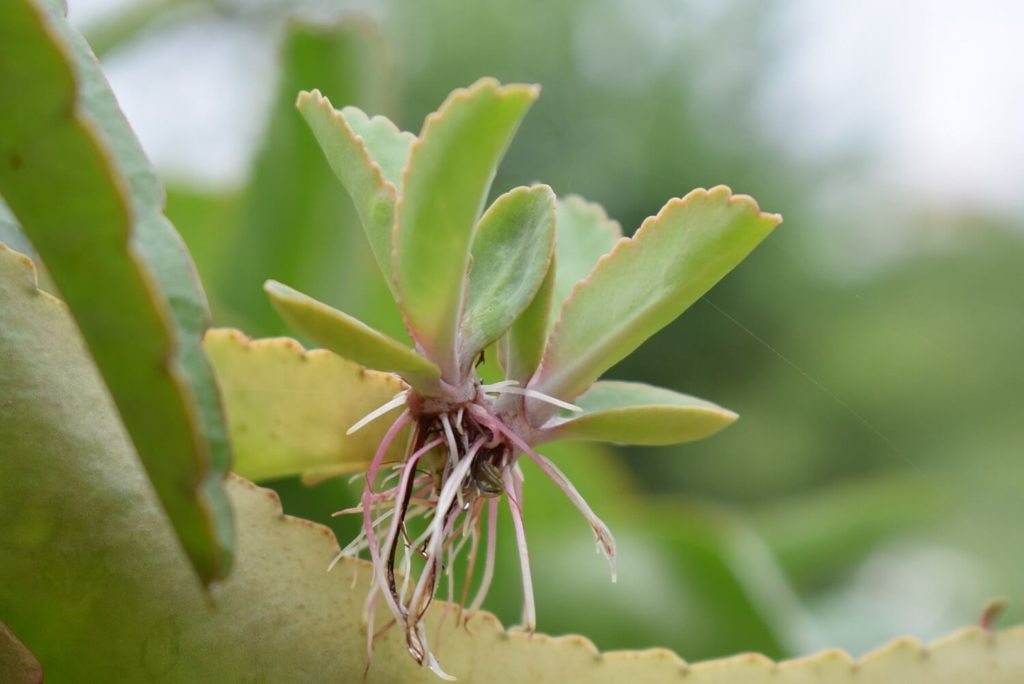
Roots are a vitally important part of plants, from succulents to oak trees. While there are a number of different structures and some specialty roots, all roots support their plants in the following essential ways:
- Roots take up moisture and transfer it to the rest of the plant
- Roots take up nutrients and transfer them to the rest of the plant
- Roots anchor plants in place, typically in soil
Usually, roots form at the base of the plant and live in the soil, performing these tasks. Sometimes, it’s just not enough — the plant’s need for water or an anchor point are not sufficiently met by the underground roots, so they develop roots on their stems. When you see
What Do Aerial Roots Do?
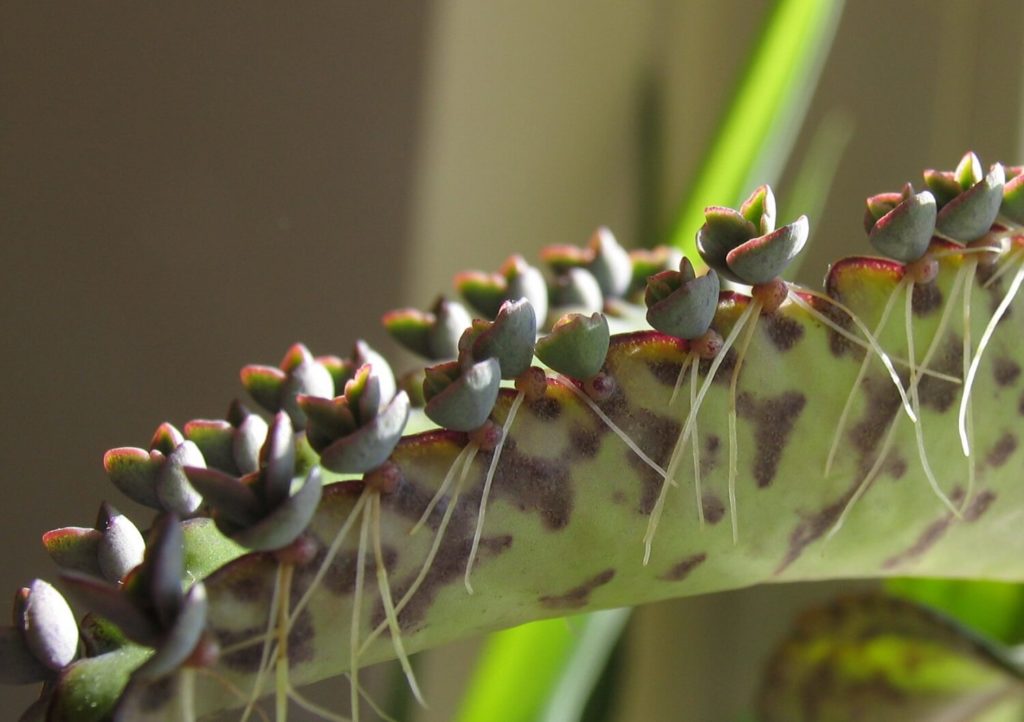
Aerial roots are able to collect water molecules from the air and transmit it to the rest of the plant. This supplements the supply of moisture in the soil. (Some plants, like mangroves, grown in very wet or swampy conditions actually use aerial roots for the reverse process — to help the plant to breathe. Succulents are likely to die from such wet conditions before aerial roots could be developed.)
Aerial roots also provide support for plants in a few ways. They may climb a structure, in the case of vines like ivy, or assist ground cover plants in spreading by forming new rooting spaces. Aerial roots on succulents typically form where a piece of the plant is likely to fall, due to damage or evolution. If the plant is weakened due to an injury or etiolation due to insufficient light, it will sprout aerial roots in anticipation of coming into contact with the earth, at which point, the aerial roots will be able to root into soil, taking up water and nutrition, while providing an anchor for that part of the succulent.
The image above shows the plantlets of Kalanchoe
What Aerial Roots on Succulents Mean
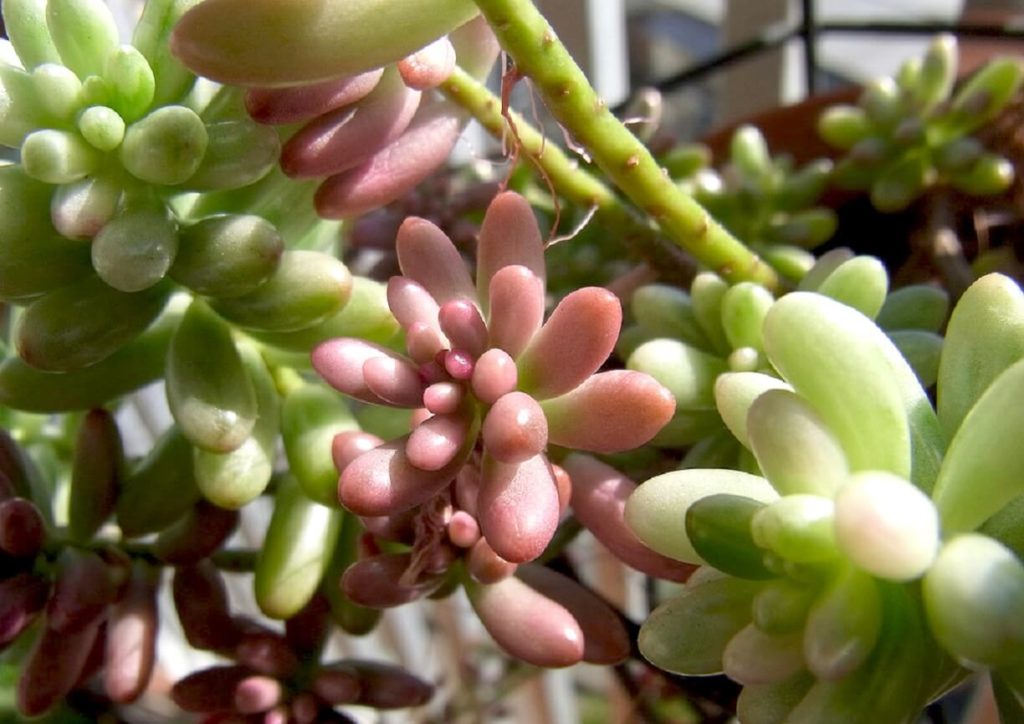
Aerial roots on succulents mean the plant has a need it is trying to meet. Sometimes these roots growing from the stem are sufficient to meet the plant’s need. But you should always strive to recognize such changes in your plants and to understand what they mean. It may lead you to change the succulent’s care to ensure its health an vitality.
This sedum
Sometimes it can be difficult to know if a succulent is stretching for more light, or if that’s just the way it grows. If it develops aerial roots along the stem, it is a clear indication that it needs more support, and may anticipate that part of the plant
Aerial Roots on Succulents
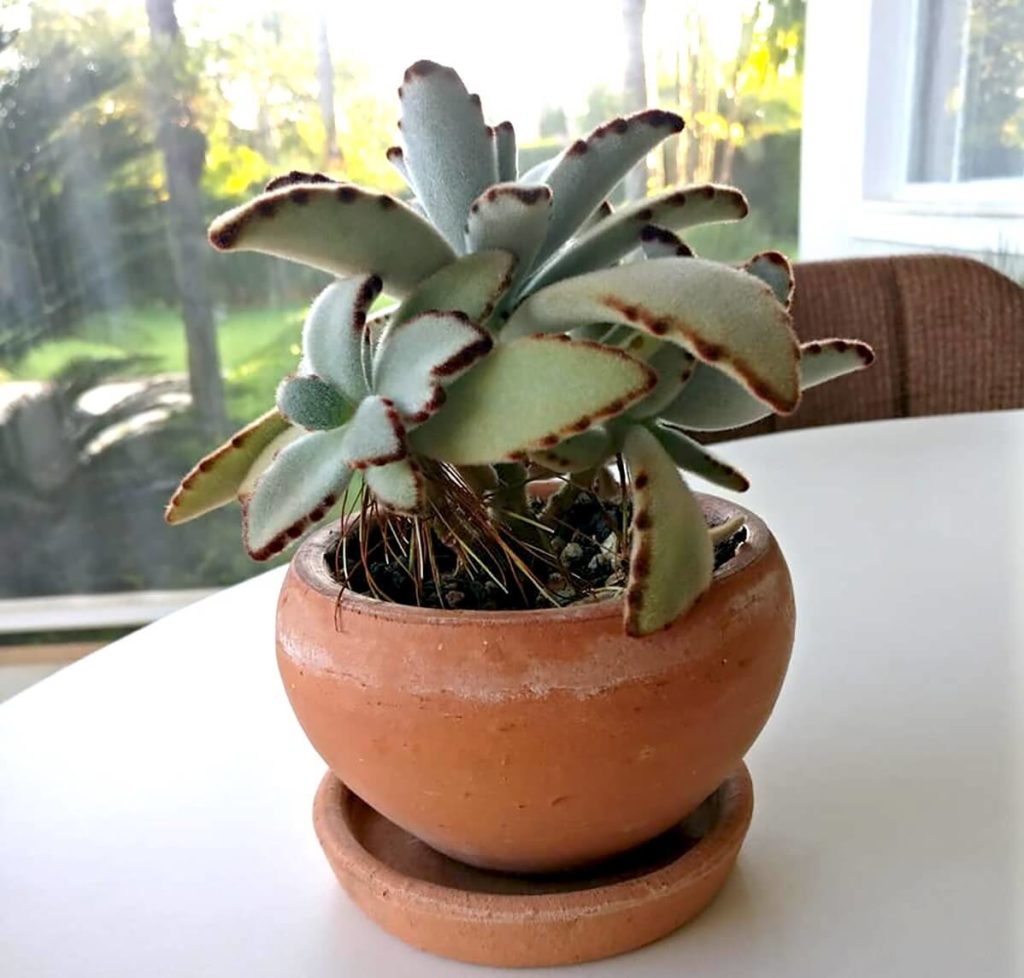
This Kalanchoe
Aerial Roots Looking for Support
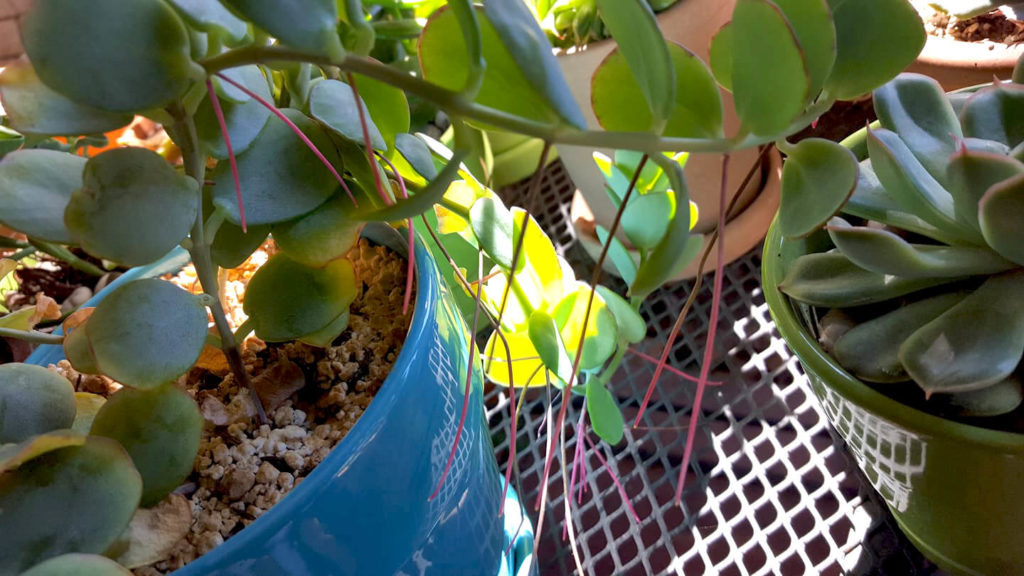
This kalanchoe is growing quickly, and became a bit etiolatedA plant is etiolated (EE-tee-oh-late-ed) when it grows very ..., reaching for more light. As this stem bends down, and over, it is developing aerial roots to provide anchor points when it reaches
What to Do with Aerial Roots
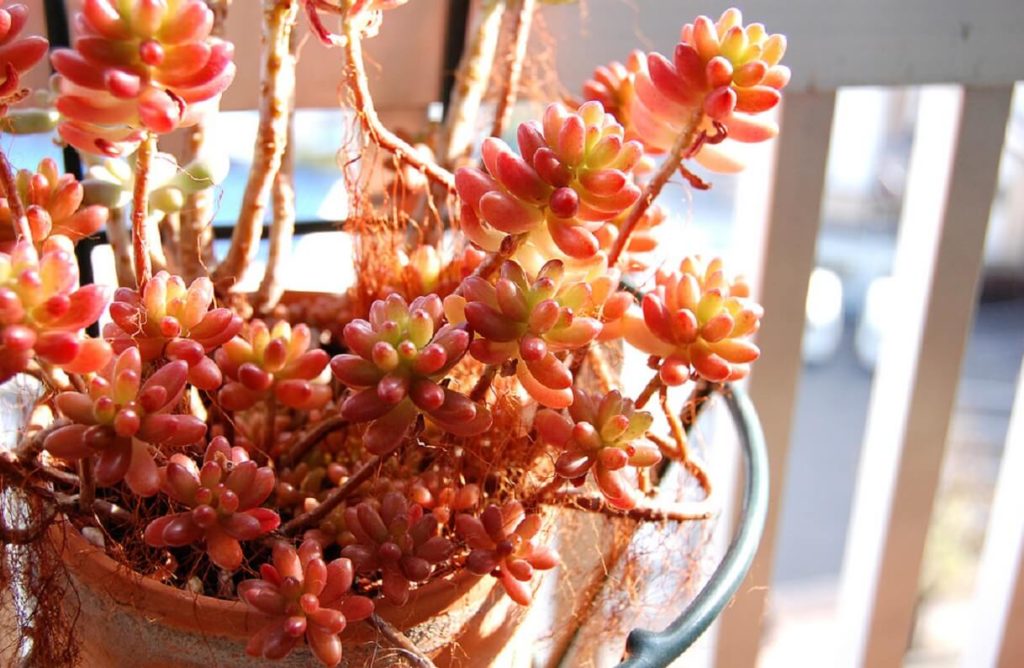
Aerial roots on succulents are an important indication of the plant’s well-being. If you understand this, you will be better able to keep your succulents healthy. When you see succulents growing roots from the stem and you understand and address the plant’s need that caused the aerial roots, feel free to remove them or clip them back if you don’t like the way they look. But don’t simply dismiss them as unimportant and remove them without first investigating the underlying issues. The succulent devoted time, energy and resources to developing those roots for a reason.
This Sedum
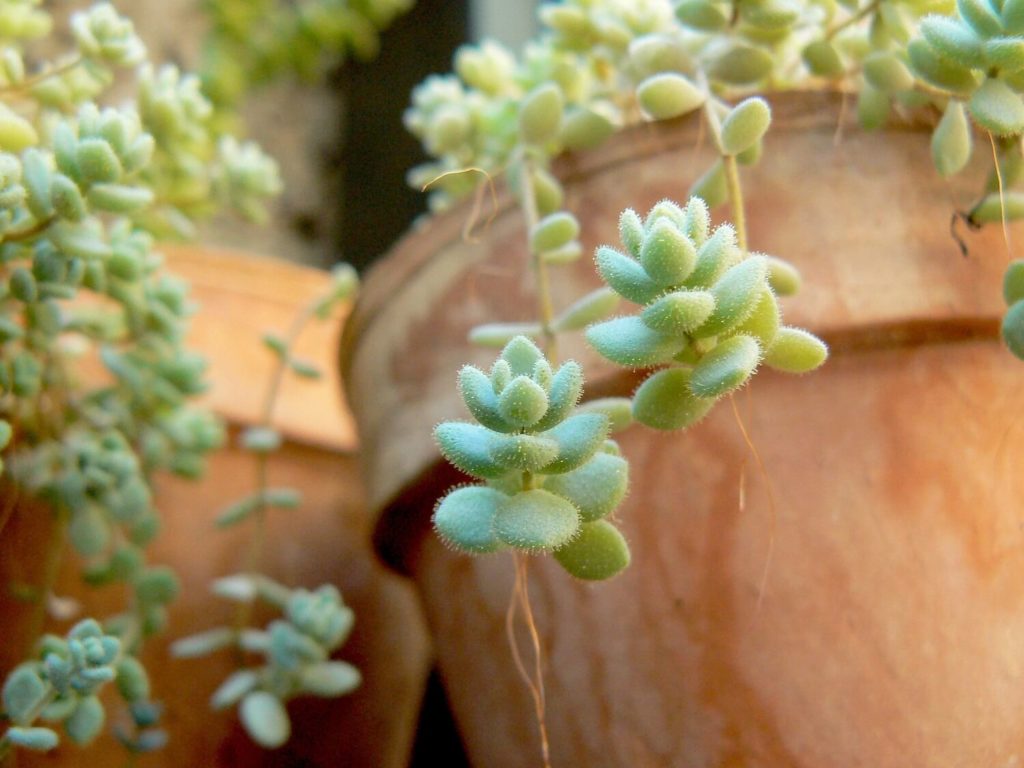
Aerial roots on succulents tell you the plant needs something its regular root structure cannot provide. This is good feedback on your care. While some varieties develop these roots more frequently than others, the message they convey is the same.
I hope this article was helpful to you! If you have any questions, please leave a comment and I will respond within 24 hours. ‘Til next time –
Happy gardening!

P.S. For more information on succulents and their care, please subscribe to The Succulent Eclectic. You’ll receive my FREE e-course 7 Steps to Succulent Success!
P.P.S. Why not join my Facebook Group for succulent lovers? We talk about succulent care, propagation, succulent identification, and design. It’s a warm and welcoming group that would love to meet you!
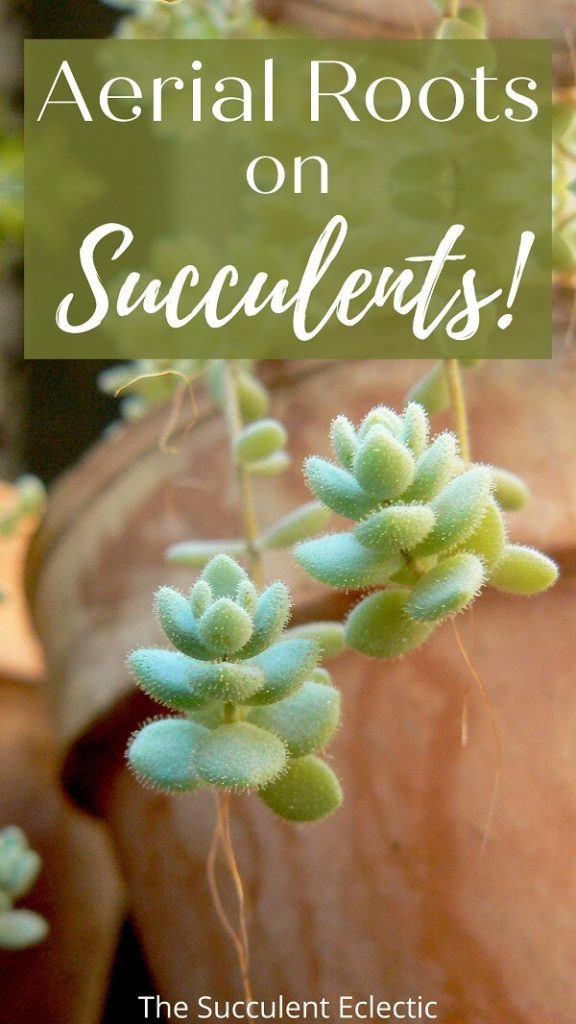
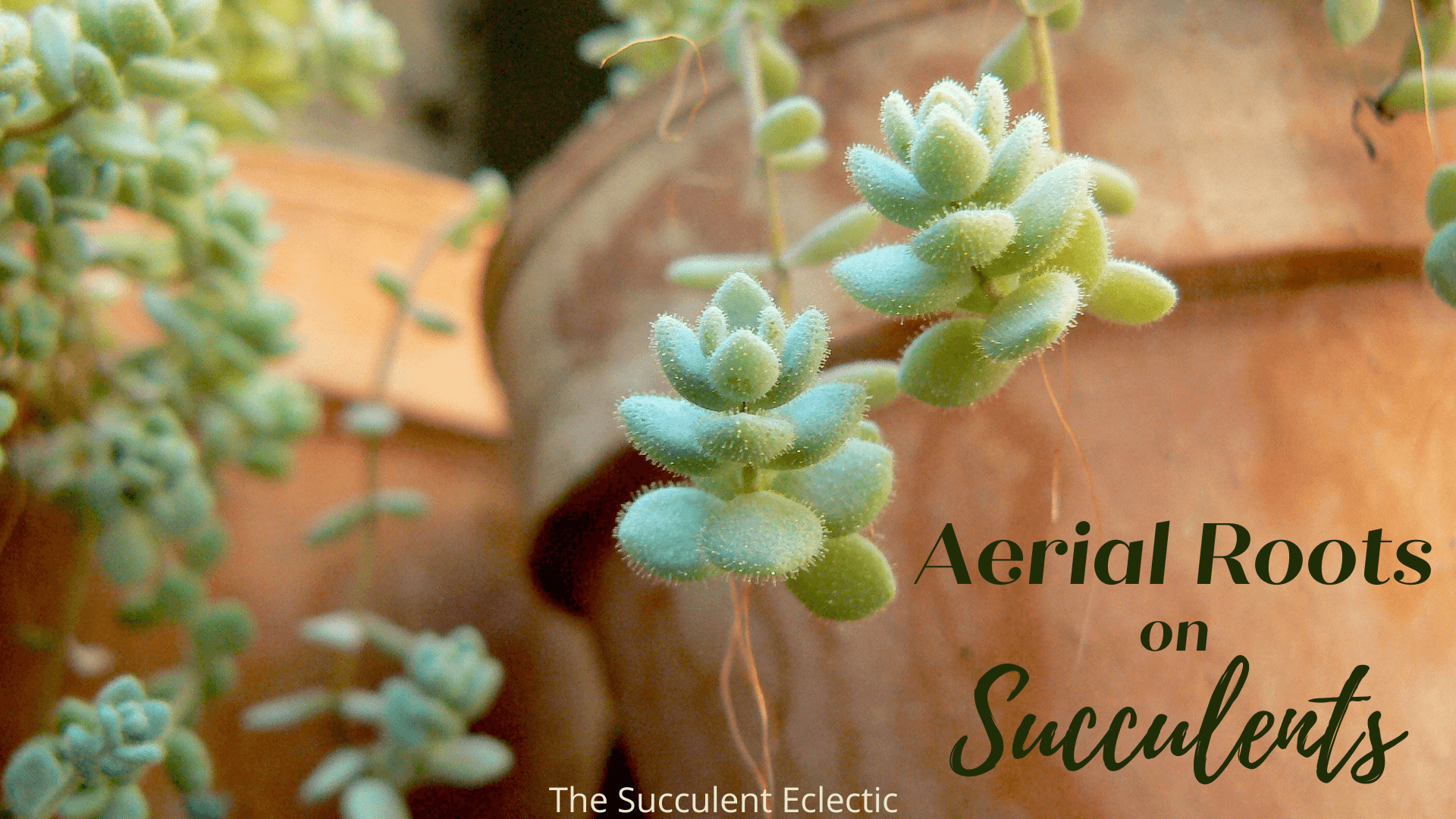

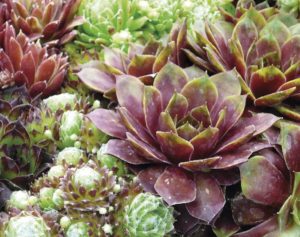
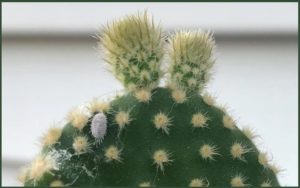

Thank you for your post. This helps me tremendously as one of my Aeonium “Voodoo” is doing that while the other of the same variety doesn’t. The sedum rubrotinctum is sending out some too. I observed that the ropey sedum like S. morganianum never seem to do it but I didn’t know why. Now the air roots explanation makes more sense.
Hello A,
I just love that “Aha” moment when things finally make sense.
Your Sedum moriganianum only make aerial roots when they are very thirsty. You’re right – they don’t need support, just water!
~Kat